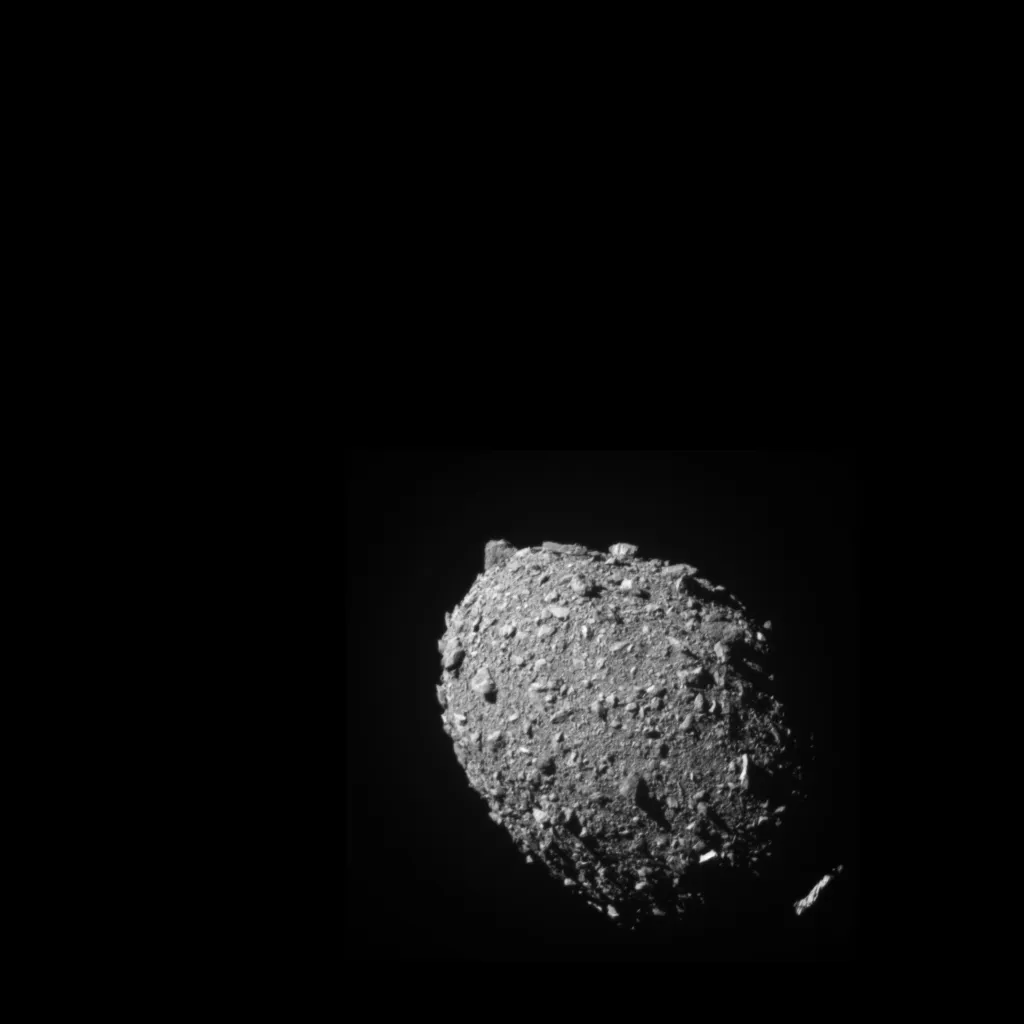NASA’s Double Asteroid Redirection Test (DART) launched on 24 November 2021, heading towards the Didymos system – a large asteroid orbited by a smaller ‘moon’, Dimorphos.
It arrived at the system on 26 September 2022 and at 11:14pm GMT that day crashed into Dimorphos’s surface.
The collision wasn’t an accident but the mission’s goal: NASA was attempting to deflect the small asteroid’s orbit in a rehearsal for a future mission that could one day deflect an asteroid on a collision course with Earth, should one ever be found.
So what happened, and was the DART mission a success?
Find out about the ESA Hera mission to study the aftermath

NASA's DART mission: as it happened
As DART closed in on Dimorphos at 22,530km/h, it livestreamed its navigation camera’s view back to Earth.
Its last image, taken just six kilometres from the surface, cut out half way through transmitting as the spacecraft was destroyed.
Three minutes later, the Light Italian CubeSat for Imaging of Asteroids (LICIACube) – which had separated from DART 15 days earlier – flew past to photograph the impressive dust cloud raised by the impact.
Meanwhile, dozens of amateur and professional telescopes on Earth were watching closely.

The asteroid, 9.6 million kilometres away, was just a dot, but they clearly saw a flare in brightness during impact, followed by trails of ejecta spreading away.
Astronomers then set about remeasuring Dimorphos’s orbit time to see if its speed had changed.
The goal was to shorten the orbit by 1% – about 10 minutes – though anything over 73 seconds would be a success.
Within weeks Dimorphos’s new provisional orbit time was announced: 11 hours and 23 minutes, a reduction of 32 minutes.
What next for the DART mission?

The DART team now want to understand exactly how DART transferred its energy to Dimorphos. One particular area of interest is the dust cloud, as the recoil from its ejection could have amplified the impact.
First, they need to gauge Dimorphos’s physical properties, such as its mass, composition and physical structure.
The wealth of observations of the impact will help, but the best answers will come from the European Space Agency’s Hera spacecraft.
Launching in October 2024 and due to arrive in the system in 2026, it will observe both Didymos and Dimorphos for six months, mapping their surfaces and interiors to fully understand the effect of the impact.
Should a hazardous asteroid ever be discovered, this understanding will help predict the path of a deflected space rock and keep our planet safe.
This guide originally appeared in the November 2022 issue of BBC Sky at Night Magazine.
